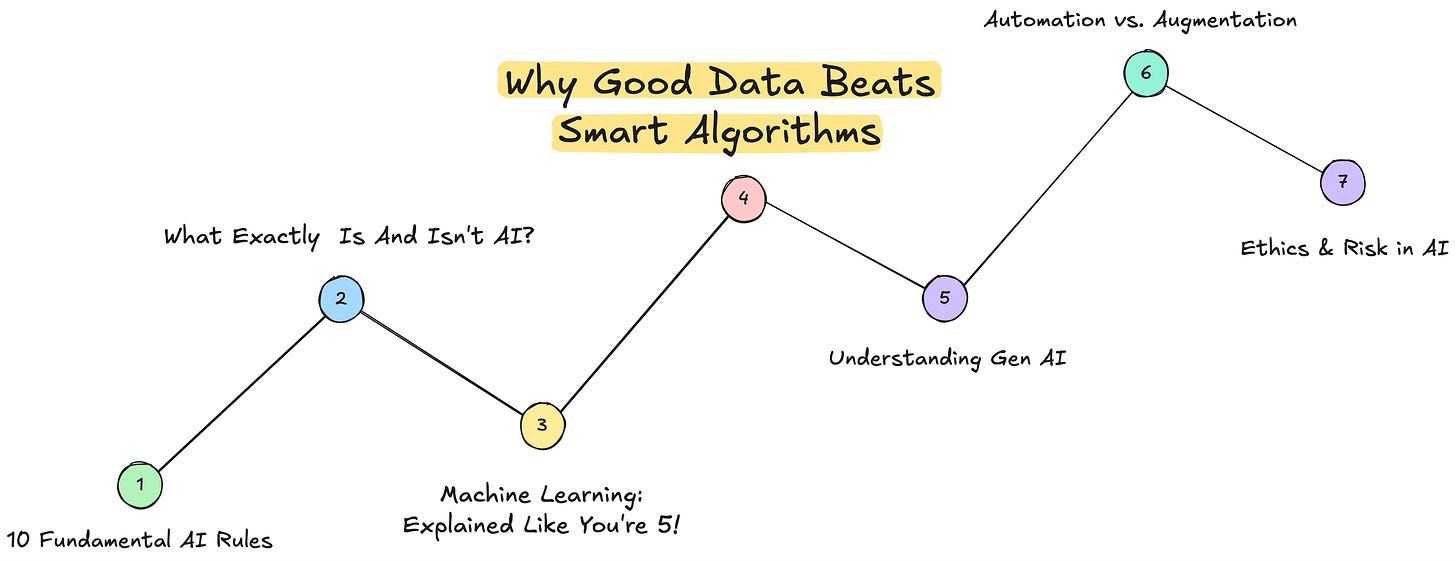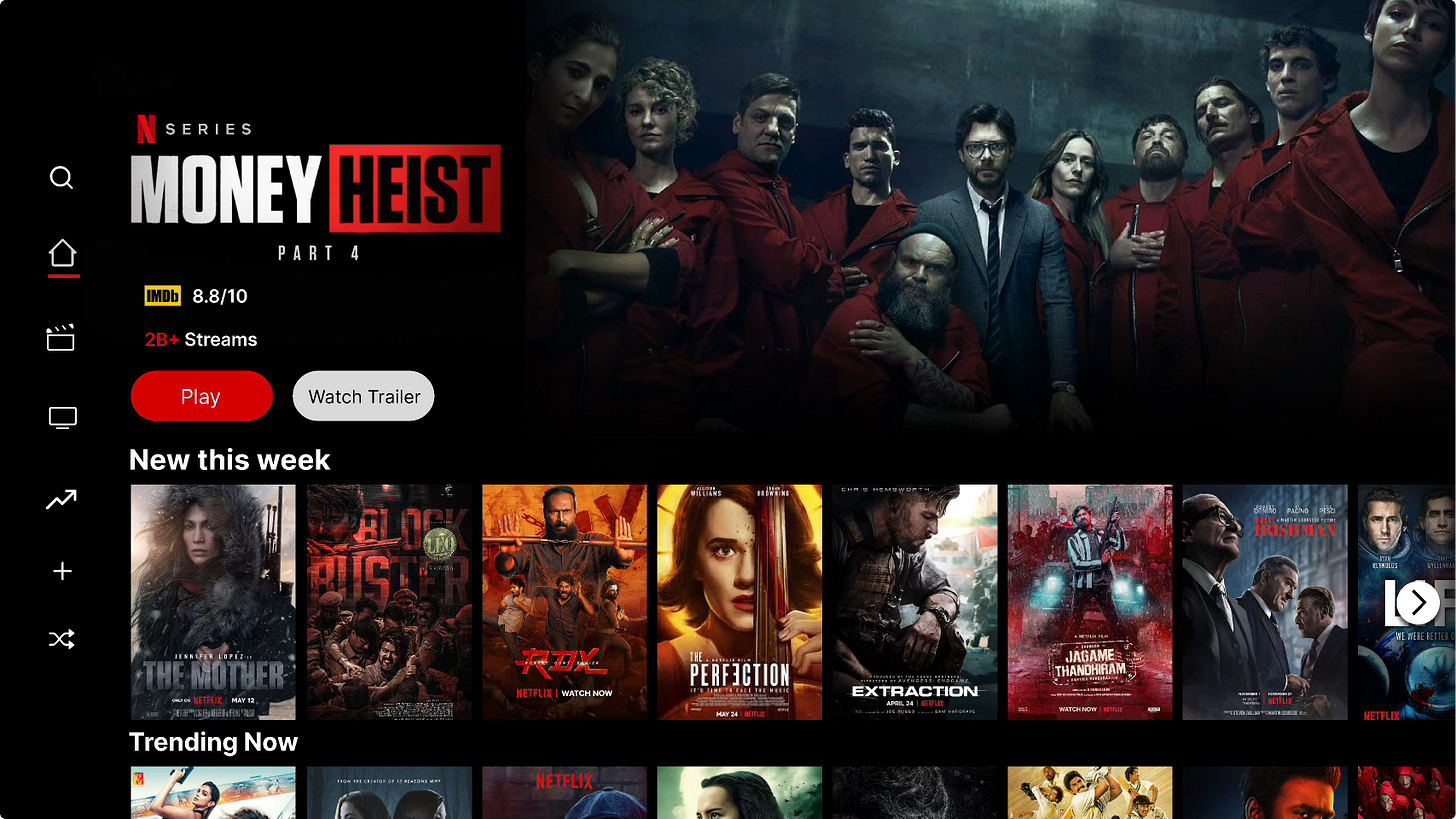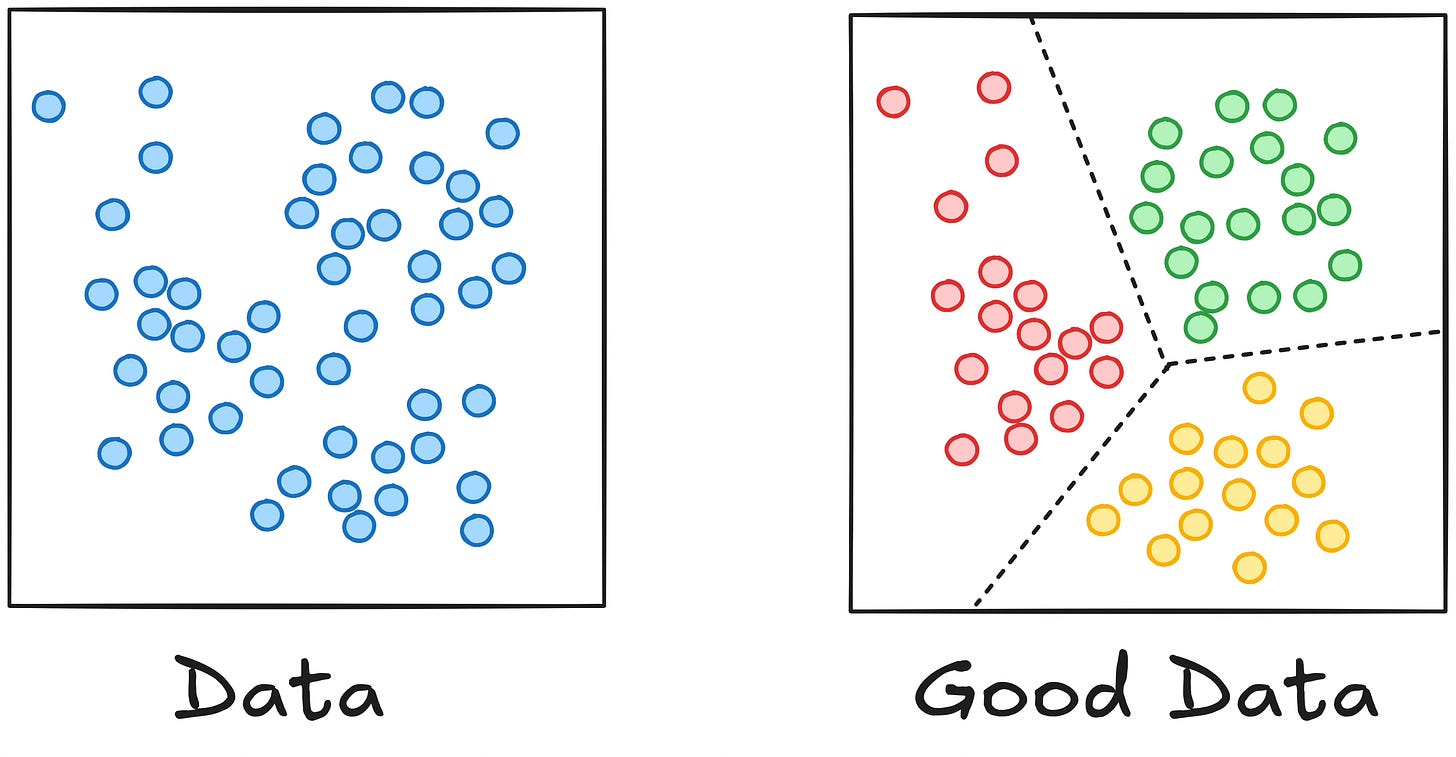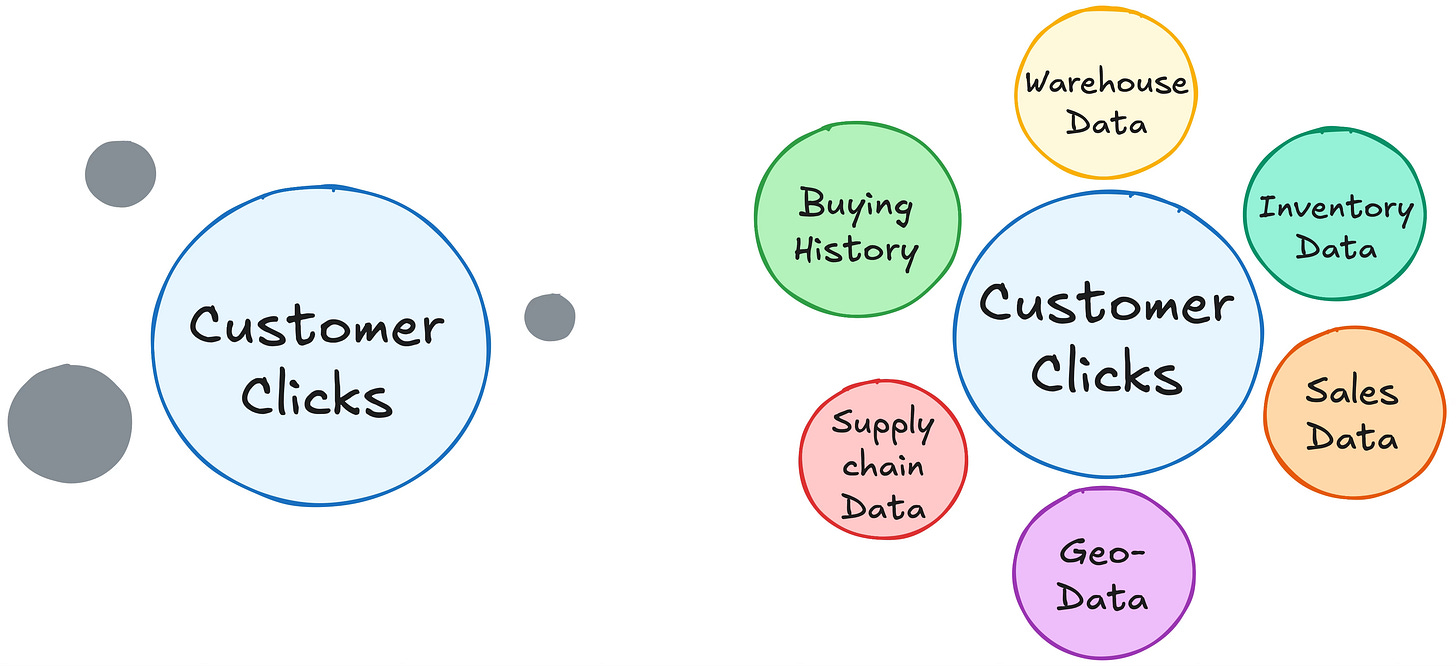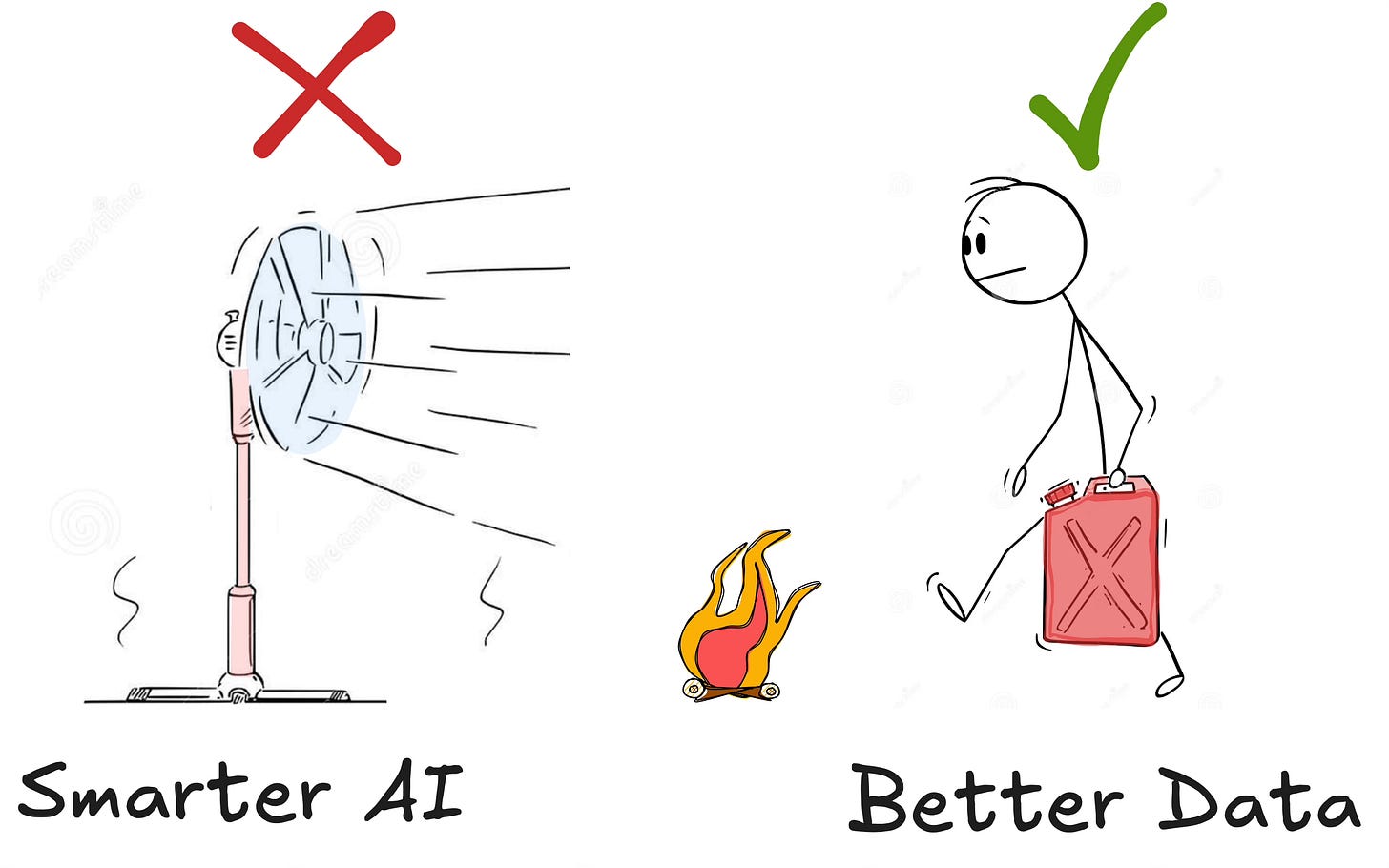Hey there 👋
Here’s my 4th newsletter of the 7-day ‘AI Fundamentals Playbook’ series.
If you haven’t checked out the first 3, they’re here!
Everyone’s chasing smarter AI.
New models, flashy tools, and algorithms with jaw-dropping names.
But here’s a what no one is telling you:
Even the smartest AI is useless without good data.
Businesses are burning millions on AI models, yet failing miserably.
Why? The suck at the other half of the equation — data.
In this post, we’ll bust 3 such myths that will tank your AI strategy before it even starts.
Let’s begin!
Myth 1: Better AI Will Save Us
Many leaders think, "If we just buy the smartest AI, it’ll solve our problems."
Sounds logical.
But it's wrong.
Let’s take Netflix.
(Its famous recommendation engine?)
It works because it feeds off rich data:
Watch time
Pauses
Rewinds
Ratings
Billions of them!
It's not just the algorithm. It's the data that acts as fuel.
Same with Ant Financial.
It didn’t beat the global banks with smarter algorithms.
It won with real-time data flows that updated constantly, giving AI what it needed to make better calls faster.
Pedro Domingos, in his amazing book The Master Algorithm, said it well:
"We don’t program solutions anymore. We grow them from data."
What this means for you:
Don’t start with the AI model. Start with your data:
Is it current?
Is it labeled well?
Is it accurate?
A brilliant AI won’t fix broken inputs.
It’ll just learn to make broken decisions faster.
Myth 2: More Data = Better Results
You might hear, "We’re collecting everything!"
That’s not strategy. That’s hoarding.
The book Prediction Machines makes it clear:
The goal isn’t just to predict more, but to predict well.
And for that, you need the right data, not all the data.
Tesla didn’t win the self-driving race by volume alone.
It focused on quality data—edge cases, tricky weather, unexpected human behavior.
That’s what trained its AI to handle the real world.
Meanwhile, many firms collect tons of irrelevant data—duplicate clicks, incomplete forms, random events—and expect their AI to "figure it out."
It won’t.
Here’s what to do instead:
Focus on:
Representativeness: Does your data cover the edge cases?
Cleanliness: Is it free from noise?
Relevance: Does it actually matter to the decision? It it well-labelled?
Compactness: Is your data fluff-free?
More data can just mean more bad decisions—faster.
Myth 3: Customer Clicks Are All the Data You Need
We’ve been primed to see customer clicks, saves, and purchases as the holy grail of data.
And those inputs are indeed valuable.
Not denying that.
But they aren’t everything.
Clicks tell you “what” — but not “why.”
Real transformation happens when companies connect the front-end (customer behavior) to back-end systems (inventory, delivery, operations).
That’s where ROI starts to pour in.
Take Amazon, for example. It doesn’t just analyze your on-site behavior.
It tracks:
Your buying patterns
Delivery times
Warehouse movements
Customer service chats
And much more
This full loop lets Amazon predict what you’ll want and how to deliver it in fastest possible time.
In the amazing book The Algorithmic Leader, Mike Walsh talks about using data from all layers:
”Real AI winners use data from everywhere — not just the customer.”
Therefore… think beyond marketing dashboards.
Get data on:
Customers
Employees
Machines
Supply chains
You want a 360-degree view—not a keyhole.
What This All Means for Business Leaders
You don’t need the best AI.
You need GOOD AI along with the RIGHT data.
AI isn’t magic.
It’s a prediction engine.
And like any engine, it runs on fuel.
Bad fuel? Bad output.
Books like Prediction Machines, Human + Machine, and Competing in the Age of AI all say the same thing:
Real winners in AI aren’t algorithm geniuses. They’re data excellence companies.
They:
Know what to collect
Know what to clean
Know what to ignore
They treat data as a product, not a leftover.
Before you chase smarter models, do a simple audit…
Is your data fresh? (Or are you training AI on 2025 behavior?)
Is it accurate? (Do you have duplicates, errors, or guesswork?)
Is it labeled? (Do you know what’s what?)
Is it complete? (Do you have the full picture?)
Is it legal and ethical to use? (Big one— don’t skip.)
That’s where the real work is.


